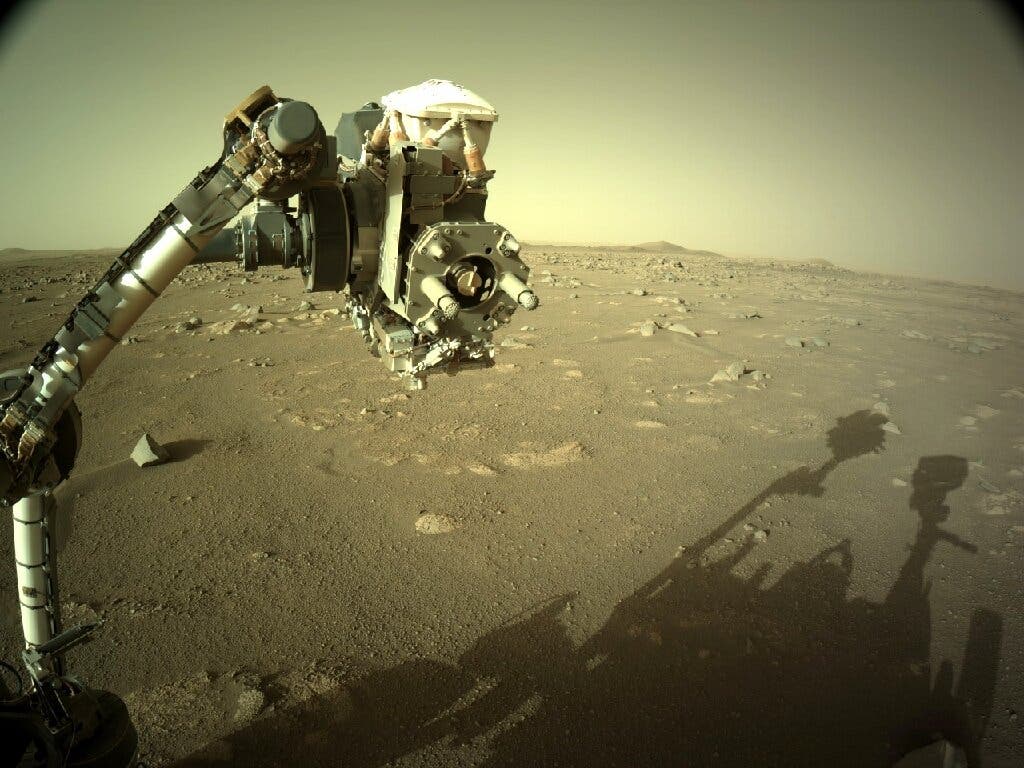
In late February 2021, NASA’s Perseverance became the latest rover to arrive on Mars. Shortly after successfully deploying around the area of the Jezero Crater, thought to have once contained a river delta, turned on its microphone and made the first-ever audio recordings on the red planet. In the process, scientists were able to ascertain that sound travels at two different speeds. Astronauts on Mars would hear things with a strange delay effect, researchers added.
The sound of a dead planet
Some of the sounds that Perseverance recorded included the acoustic waves produced by its laser zapping rock or by the Ingenuity helicopter as its rotor spun above the rover. But they were not exactly what scientists expected.
The speed of sound varies according to the temperature of the air. Because the molecules in a fluid such as air move more slowly at colder temperatures, sound travels slower through cold air and faster through warm air. The speed of sound also varies depending on the type of fluid and its density. Sound waves travel faster in denser substances because neighboring particles will more easily bump into one another. Sound moves much faster through water than through air, for instance.
At sea level, assuming an average temperature of 15 degrees Celsius (60 degrees Fahrenheit), the speed of sound on Earth is around 343 meters per second (761 mph/1,225 km/h).
Scientists always expected to see that sound travels much slower on Mars than on Earth, as the average temperature on the red planet is around -60 degrees Celsius (-80 degrees Fahrenheit) and its atmosphere is about 100 times thinner than the one on Earth, but the double speed limit was intriguing.
According to the analysis of the audio recording from Perseverance, sound travels at 240 meters per second, about 30% slower than on Earth. However, the sound made by the rover’s laser traveled at 250 meters per second, slightly faster than the other recorded sounds.
At first, the NASA researchers thought this was some error. But the measurements were correct and later the scientists were amazed to find that sound travels at two speeds close to the Martian surface — one for high-pitched sounds like the laser blast and another for lower frequencies like the whir of a helicopter.
With two different modes of travel for different frequencies of sound, hearing on Mars would certainly be a bizarre experience until you get used to it. Furthermore, the low atmospheric pressure greatly diminishes the distance intelligible sound can travel. This means that you’d have to stand up to ten times closer to a sound source to be able to hear it than on Earth.
“On Earth, the sounds from an orchestra reach you at the same speed, whether they are low or high. But imagine on Mars, if you are a little far from the stage, there will be a big delay,” said Sylvestre Maurice, the study’s main author and scientific co-director of the SuperCam mounted on the rover’s mast which has the main microphone.
“All of these factors would make it difficult for two people to have a conversation only five meters (16 feet) apart”, the French CNRS research institute said in a statement.
That’s not where the acoustic strangeness ends. Besides the sounds generated by the rover and its auxiliary equipment, NASA couldn’t record much of anything. With the exception of the wind, there are hardly any natural sources of noise. Mars looks dead and sounds dead too.
You can hear some of the “screech” and “clank” sounds recorded by Perseverence in the audio clip below. It’s the closest we are to landing on Mars without putting on a pressure suit, said Thomas Zurbuchen, associate administrator for NASA’s Science Mission Directorate.
The findings appeared in the journal Nature.





